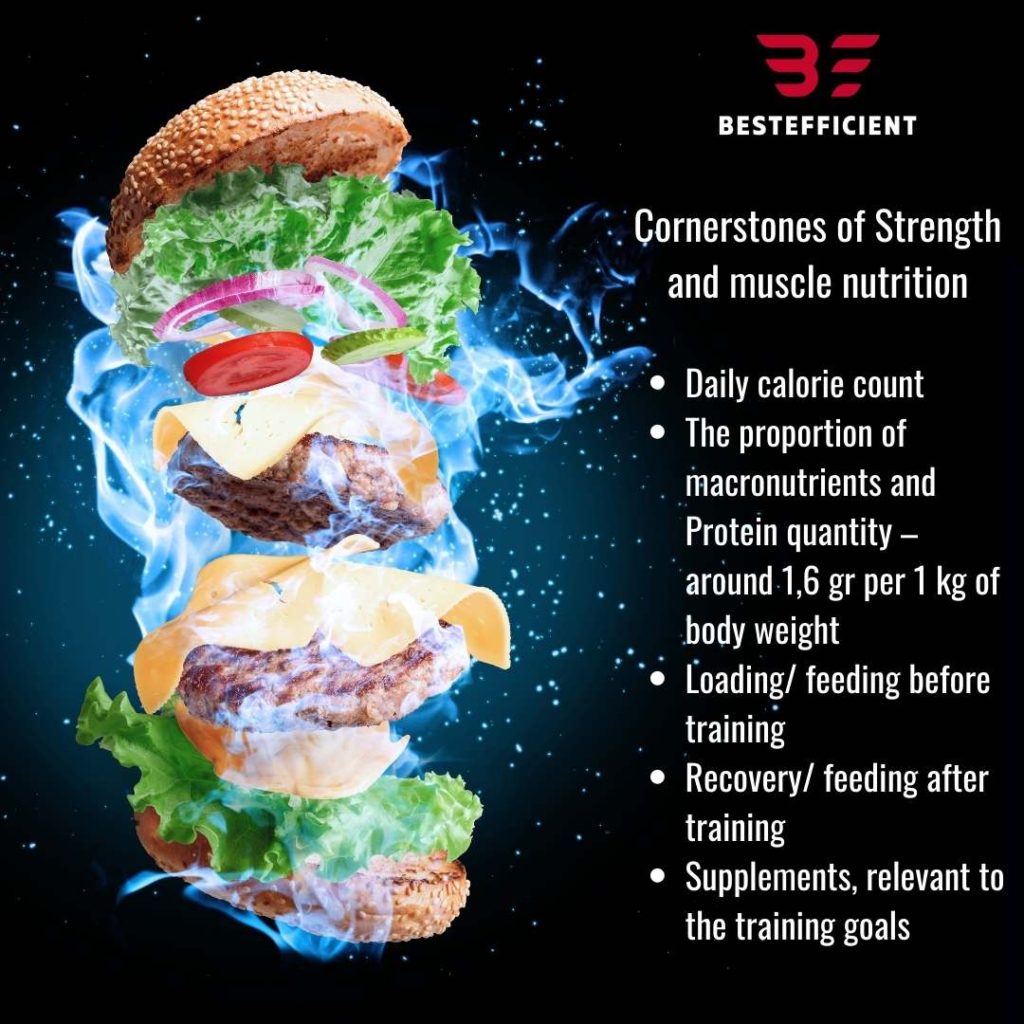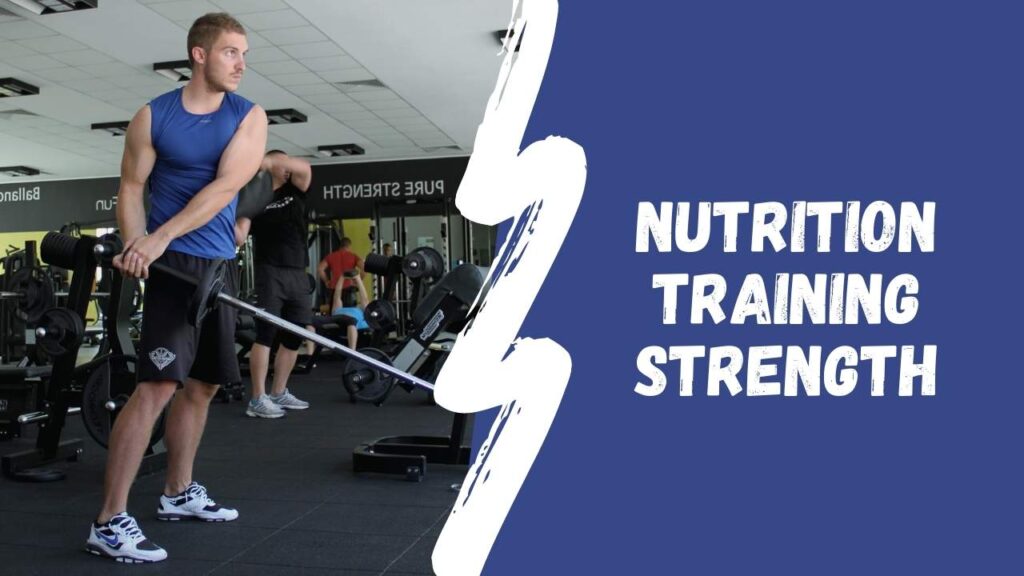Intro to Strength Training
Fitness Instructor Notice: Strength Training is for people focused on building defined and strong muscles. It is for those, who besides a good health status on the inside, also want a pronouncedly aesthetic look on the outside. Strength training could benefit your health and lead to longevity more than every other general fitness activity. Stay with me for a while to update your knowledge and you’ll be able to take care of yourself better!
When you hear „Strength training“ you probably paint yourself the image of someone who is exceptionally dedicated to their training and nutrition plan or maybe a person who deals actively and purposefully with sports. Yes, that is the case indeed.
Sports people often include weights workouts in their training plans to improve certain skills, which would give them an advantage, as well as to reduce the risks of certain types of injuries. Sports such as athletics, swimming, volleyball and contact sports – basketball, football, different types of martial arts – do include weights training as a part of the overall training process.
Unlocking Strength: The Power of Structured Training and Nutrition
1. Point and Purpose of Strength Training:
- Weights training can and will help you increase your strength and the size of your muscles. These workouts are focused particularly on the composition of the body and changing the ratio of muscle mass to fat, in favor of the muscles. Although they are not too impressive in terms of burning calories, they are the long-term turn key in the fight against unwanted fat depositories.
- The actual overcoming of the weight and the specific weight is in fact the physiological provocateur, making your muscles react, and consequently – adapt. That precisely is the mechanism, which makes you stronger!

Lifting weights is not just exercising, it is also a way to get rid of the stress, similar to almost any other sports activity, only better!
- The bouquet of happiness hormones, which are increased during and right after weights training will definitely help you distance yourself from the everyday hassles. Another positive effect is the almost instantaneous feeling of change, which is the result of muscles “draining”.
If you are one of those people who avoid the weights and machines in the gym, this is one major reason to trust them with yourselves.
Happiness does not come from what the scales display, But from the reflection in the mirror, that shapes better and better with each next day.
- Weight training and exercises help tighten the back muscles, which some “broad specialists” call “a muscles corset” – by supporting your spine movements happening as they should be, without any pain. The weak muscles of the back or abdomen and/or bad posture can make you more vulnerable to tension and pain in the back and waist.
- After 30 years of age, the bone density starts decreasing, and this process accelerates even more after 50 years of age. It is a scientifically proven fact that weight lifting impacts positively and improves bone density. Weight training is probably not the key to turning 100 years of age, but it is definitely one of the methods that can make your remaining years fuller.

2. The Importance of Structured Training
Next, the goal of strength training is to challenge your body to the limit of your capabilities, after which to adapt to the physical challenge that is applied.
The well-planned and described training plans are the base for determining the exact increase in resistance. Suppose you are a professional sportsperson and you are seeking to reach the maximum of your capabilities at a specific moment. In that case, this training plan needs to be adjusted to your sports calendar.
To achieve that goal, it is obligatory to follow a structured training plan for increasing your strength.
This training plan, in turn, should be led and controlled by a highly qualified strength and conditioning coach, with highly specific training.
The education and knowledge of the trainer about the process of weight training and its variables, help you be guided toward a relevant training plan. It includes the right exercises for you, using the exact amount of weights, implementing the relevant adaptations in time, and thus avoiding plateaus in your training.
He or she should hold a certificate for Strength and Conditioning Coach (and I don’t mean a two-day or a two-week course) or a higher degree such as an M.Sc. or even a Ph. D. in Sports Science or Medicine.
When we talk about training for increasing muscles, we should necessarily talk about relevant nutrition as well. This is the main pillar in the process of muscle hypertrophy, which is increased muscle growth.
3. Good Nutrition as Part of the Process
When we talk about training for increasing muscles, we should necessarily talk about relevant nutrition as well. This is the main pillar in the process of muscle hypertrophy, which is increased muscle growth.

There are some major principles in nutrition for muscle growth and strength increase, which need to be abided by religiously.
Cornerstones of Strength and muscle nutrition:
- Daily calorie count
- The proportion of macronutrients and Protein quantity – around 1,6 gr per 1 kg of body weight
- Loading/ feeding before training
- Recovery/ feeding after training
- Supplements, relevant to the training goals
Frequently Asked Questions about Nutrition for Muscles (Growth):
What should I eat before a power workout?
This is a top favorite of mine – almost anything; what is important to remember is that the closer to training you are, the easier to digest your food should be. So that you do not burden your digestive system during the workout.
Thus, if you have 3 hours left to the workout, you may eat a sandwich with whole-grain bread, an omelet, or meat with rice. However, if your workout is in an hour or less, you better stick to some yogurt with fruit, a protein shake, or fruit such as a banana, an apple, or an orange.
What should I eat after a power workout?
Here the most important question is not what, but when, because if you want to be big and strong, you should necessarily stop the catabolic process fast after the workout (up to 30-40 min after).
The classic option is a protein shake with a banana. However, if you have some chicken with grilled vegetables, and omelette and a loaf of wholegrain bread or cottage cheese with fruit, please, help yourselves.
Whats so special in this training
4. The Role of Adaptation in Strength Training
I’m a Master from National Sports Academy which hosts the Congress of Sports Stress and Adaptation. This event is highly focused on improving elite athletes as we know that almost all the latest benefits in sports are first released for professionals and then reach the masses.
One key aspect of adaptation is the concept of progressive overload. This means that the stress placed on the body must be gradually increased over time to continue stimulating adaptation. This can be achieved by increasing the weight lifted, the number of reps performed, or the frequency of training sessions.
Another important factor in adaptation is the significance of recovery. Rest and recovery periods are essential for the body to repair and rebuild tissues and adapt to the stress of strength training. Overtraining, or not allowing enough time for recovery, can lead to injury and decreased performance.
The Congress also emphasizes the role of nutrition in adaptation. Adequate protein intake is crucial for muscle growth and repair, while carbohydrates and fats provide energy for training sessions. Proper hydration is also vital for performance and recovery. In summary, the role of adaptation in strength training is essential for achieving optimal results.
The Congress of Stress-Sport Adaptation emphasizes the importance of progressive overload, recovery, and nutrition in promoting adaptation and improving strength and muscle mass. By following these principles, athletes and fitness enthusiasts can achieve their goals and improve their overall performance.
6. Specifics and challenges of Strength Training:
Lifting weights requires precision.
The way of implementation is of utmost importance, so you need to have a fitness coach to guide you.
There is no more certain way not to get the maximum out of yourself, while at the same time risking your health but with “self-made” training. Every single one of the even basic exercises requires you to be aware:
- What should be the position of your back,
- The pain, as per which to curl your arm/ leg,
- The moment when to bread out
- And a bunch of other specifics that you need to have in mind: if you have a spine distortion, flat feed, or shorter ligaments; if your joint have hyperextension, etc.
Although the structure of the human body is similar, it is not identical for everyone. That is why you need a coach with the relevant knowledge and training, to monitor and guide you!

7. Strength training is a level above weight training:
It is a collective notion, that encompasses different types of physical activity, including strength training, as well as conditioning training
Exercises with bodyweight such as lunges, pull-ups, and push-ups, as well as different kinds of workouts including rowing, climbing, throwing of medical ball, or jumps can be a part of a unified program of weight training.
You may include different kinds of equipment such as free weights or gym machines, which are typical for training with weights. However, you may also use battle ropes, balance balls, “slade” or jump box, if you believe they are relevant to your goals.
You do need fitness machines.
Wights workouts are not the ones you may do anywhere and anytime, regardless of what equipment you have. Nowadays fitness industry is built around producing ever more unique machines, via which you can reach “quickly and easily” your desired result. Here is why it is important to find yourself a gym that is suitable for you. That is often related to, if not determined by finding the coach that is right for you!
8. Strength Training is more than burning calories
The true benefit of strength training is far from burning calories alone.
The rate of burning calories is not so great, as compared to intensive aerobic activities. Thus if you are planning to “neutralize” the chocolates you ate at a colleague’s’ birthday party, you won’t make it! If you compare the calories burnt during a HIIT or a spinning class, probably an arms workout will rank by far second with half the points. However, it does not mean weights workout is not efficient or it will not produce results in time. I repeat: look at the mirror, not the scales!
Strength training and Health benefits
9. Slow the Aging
In the song “Wavin’ Flag” K’naan singin’ “When I got older, I will be stronger. They’ll call me freedom…” If you just let me play with the meaning of these lyrics it’s true that when you get older you should be stronger and, in the end, or until the end (excuse my joke) you will be free. You’ll be free to live the fulfillment of your body’s abilities.
Strength training can be particularly beneficial for older adults as it helps to maintain muscle mass, increase bone density, and improve overall physical function. As we age, we naturally lose the patience to listen to idiots (which I admire). Still, sadly enough we also lose muscle mass, leading to a decline in physical function and an increased risk of falls and fractures. Unfortunately, we just became more fragile.
Strength training can help slow down this process and improve quality of life. Additionally, strength training has been shown to positively impact cognitive function and can reduce the risk of age-related diseases such as Alzheimer’s and dementia.
10. Prevent Diseases
It is said that prevention is the best medicine. One of the best ways to prevent chronic diseases such as type 2 diabetes, heart disease, and obesity is through regular strength training.
By building muscle mass, strength training can increase insulin sensitivity and improve glucose uptake in the body, which can help prevent or manage type 2 diabetes.
Additionally, strength training can help lower blood pressure and improve cholesterol levels, both of which are risk factors for heart disease. By incorporating strength training into your fitness routine, you can improve your overall health and reduce your risk of chronic diseases.
As they say, an ounce of prevention is worth a pound of cure.
11. Cure Diseases
Imagine being able to treat certain diseases and conditions just by lifting weights?
Well, it may not be as simple as that, but strength training has been shown to be an effective treatment option for various health issues. For instance, strength training can improve bone density and help to reduce the risk of osteoporosis, a disease that weakens bones and increases the risk of fractures. It can also be used to alleviate chronic back pain and manage symptoms of arthritis.
In fact, strength training has been shown to be just as effective as medication for managing pain and improving physical function in individuals with knee osteoarthritis. Furthermore, strength training can aid in the recovery process for individuals who have undergone surgery or experienced an injury.
By building muscle strength, individuals can regain function and improve their quality of life. So, whether you’re dealing with a chronic condition or recovering from an injury, strength training may be a helpful addition to your treatment plan.
Strength training in your everyday life
12. Risks of Strength Training
The adage “no pain, no gain” doesn’t apply to strength training. While it is generally safe for most people, strength training does come with certain risks if not done properly. Common risks associated with strength training include muscle strains, joint injuries, and overuse injuries. But just like in life, there’s always a way to minimize the risks.
Working with a qualified personal trainer who can help ensure proper form and technique is key to avoiding injury. Progressive overload is important – starting with lighter weights and gradually increasing intensity will also help you build your strength without overwhelming your body.
Remember, consistency is key. It’s better to gradually increase your strength than to be sidelined by an injury that could have been prevented with proper training.
13. Lack of Flexibility
Strength Training and the lack of flexibility: Have you ever heard of the saying, “Use it or lose it?” Well, when it comes to flexibility, this is especially true. Some individuals may worry that strength training will make them less flexible, but incorporating stretching and mobility exercises into a strength training routine can actually improve flexibility and range of motion. In fact, proper strength training can help balance out muscle imbalances and promote better joint alignment, leading to improved overall flexibility.
Additionally, working with the antagonistic muscles, or the muscles that oppose the ones being trained, can be just as important for maintaining flexibility and preventing injury as stretching. It is important to stretch, warm up, and work with antagonistic muscles properly before starting any strength training exercises to prevent injury and to maintain overall flexibility.
14. Boosting Energy Levels
Do you ever feel like you just don’t have enough energy to get through the day? Well, strength training might be the solution you’ve been looking for.
By improving overall fitness and increasing muscle strength, strength training can help boost energy levels and reduce feelings of fatigue. Not only that, but it can also improve your mood and give you a greater sense of well-being.
For individuals who struggle with low energy levels, incorporating strength training into their routine can be a game-changer, improving their overall quality of life and helping them feel more energized and capable. So, don’t let low energy levels hold you back from living your best life – give strength training a try!
15. Working on Imbalance
Did you notice the strong Jonny Bravo in the gym last time? For some, strength training can feel like a solid foundation, providing the structure and support needed to build strength and improve overall fitness. For others, it can feel like tightrope walking, bringing pain and discomfort from imbalances and poor posture.
However, with the right training plan and approach, strength training can actually be used to address these imbalances and improve overall posture, reducing the risk of injury and improving athletic performance.
By targeting specific muscle groups and incorporating exercises that focus on balance and stability, individuals can improve their overall strength and fitness while reducing the risk of pain and discomfort. So, next time you hit the gym focus on building strength to feel stable on your feet wherever you step.
16. Fighting the Negative Effects of Sitting
Do you know that seating is the new obesity?
With the increase in sedentary jobs and technology use, more and more people are spending extended periods of time sitting. Unfortunately, this can have negative effects on posture and overall health.
However, incorporating strength training into your routine can help counteract these effects by strengthening the muscles that support proper posture and improving overall fitness. By focusing on exercises that target the back, core, and glutes, you can improve your posture and reduce the risk of injury, even if you spend long hours in a seated position.
17. Strength Training for Heavy Workers
My friend once told me that he’s a tire fitter, and he never skips a workout. He knows that if he doesn’t push the weights in the gym today, the heavy tires will push him around at work tomorrow.
Strength training can be especially beneficial for individuals with physically demanding jobs like my friend. By improving overall strength and endurance, it becomes easier to perform job tasks, reducing the risk of injury.
Additionally, strength training can help prevent work-related injuries and improve the overall quality of life for individuals with physically demanding jobs.
WrapUp
In conclusion, strength training is a powerful tool that offers numerous benefits for individuals seeking to improve their overall health and well-being. It goes beyond simply building muscles and burning calories, as it plays a vital role in enhancing physical performance, preventing diseases, slowing down the aging process, and addressing various health concerns.
Through structured training, proper nutrition, and understanding the principles of adaptation, individuals can unlock their full potential and achieve remarkable results. However, it is essential to approach strength training with caution, as there are risks involved, such as lack of flexibility and potential for injury. Therefore, it is advisable to seek guidance from a qualified professional to ensure a safe and effective strength training journey.
By incorporating strength training into our lives, we can experience increased energy levels, and improved balance, and combat the negative effects of sedentary lifestyles. Whether you are a heavy worker or someone looking to enhance your overall fitness, strength training offers a path to a healthier, stronger, and more vibrant life.
Best as always,
Coach Stef
Sources

